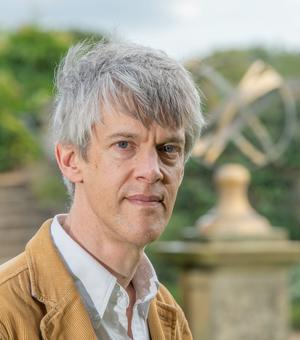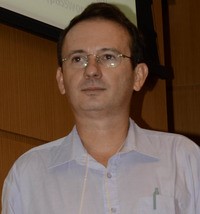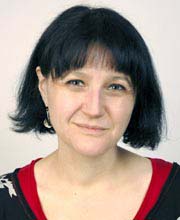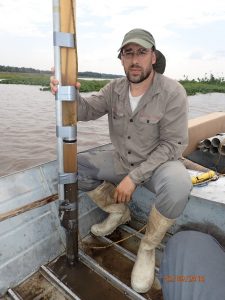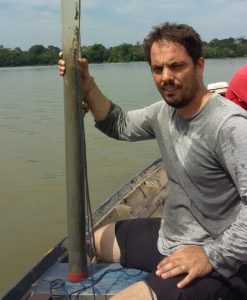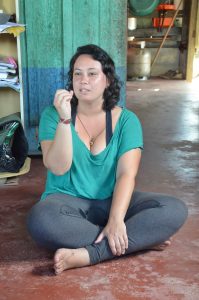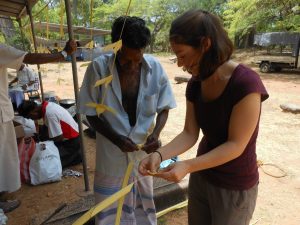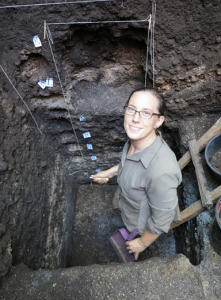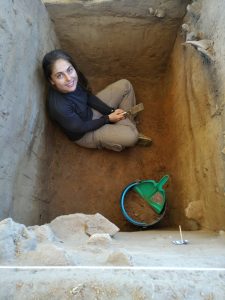 I am an archaeologist specialising in the integration of plant microfossil analysis (phytoliths and starch grains) to understand plant resource use, cultivation and management practices, and past landscape transformations in pre-Columbian Amazonia. I have mainly worked in Southwestern Amazonia, publishing on topics such as the environmental impact of the enigmatic ‘geoglyph’ sites, and the long-term history of plant resource use at the > 6,000-year-old Teotonio and Monte Castelo archaeological sites, both of which are case studies in the HERCA project. My current FAPESP Young Researcher grant, ‘Peoples, Plants and Landscapes in Amazonia (2018-present)’ has funded the installation of the Microbotany Laboratory at MAE-USP, one of the first of its kind in Brazil, where the phytolith and starch grain analyses related to the HERCA project will be carried out. Other collaborations linked to my Young Researcher grant include the study of Pleistocene/Holocene resource use in the Lower Amazon, the geoarchaeology of forest/savanna dynamics in the Montanha and Mangabal ribeirinho territory, in the Upper Tapajós river, and the ethnoarchaeology of plant and soil management among the Kuikuro of the Upper Xingu Indigenous Territory. My eventual goal is to combine archaeological and palaeoecological data with indigenous and traditional knowledge to advance current conservation and geopolitical debates in the Amazon.
I am an archaeologist specialising in the integration of plant microfossil analysis (phytoliths and starch grains) to understand plant resource use, cultivation and management practices, and past landscape transformations in pre-Columbian Amazonia. I have mainly worked in Southwestern Amazonia, publishing on topics such as the environmental impact of the enigmatic ‘geoglyph’ sites, and the long-term history of plant resource use at the > 6,000-year-old Teotonio and Monte Castelo archaeological sites, both of which are case studies in the HERCA project. My current FAPESP Young Researcher grant, ‘Peoples, Plants and Landscapes in Amazonia (2018-present)’ has funded the installation of the Microbotany Laboratory at MAE-USP, one of the first of its kind in Brazil, where the phytolith and starch grain analyses related to the HERCA project will be carried out. Other collaborations linked to my Young Researcher grant include the study of Pleistocene/Holocene resource use in the Lower Amazon, the geoarchaeology of forest/savanna dynamics in the Montanha and Mangabal ribeirinho territory, in the Upper Tapajós river, and the ethnoarchaeology of plant and soil management among the Kuikuro of the Upper Xingu Indigenous Territory. My eventual goal is to combine archaeological and palaeoecological data with indigenous and traditional knowledge to advance current conservation and geopolitical debates in the Amazon.
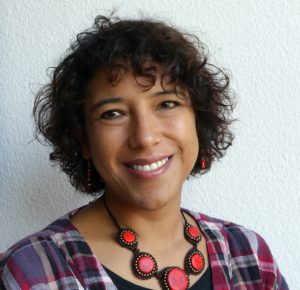 I am a lecturer at the Department for the Anthropology of the Americas, Rheinische Friedrich-Wilhelms-Universität Bonn, Germany. My research is focused on complex societies of the southwest Amazon, expansion and ethnogenesis processes in the southern lowlands of South America, and cultural heritage. I have led ~15 field expeditions in the Bolivian Amazon working as Co-Director of the Mojos Archaeology Project in Bolivia on behalf of the German Archaeological Institute and the Unidad Nacional de Arqueología of Bolivia. These research projects include the archaeological sites of Loma Salvatierra, Bella Vista and Jasiaquiri. In HERCA, I am in charge of the archaeological excavations of the habitation mound of Loma La Punta (in the Monumental Mounds Region) and Pedras Negras (in the ring ditches of the Guaporé River). My archaeological experience of the ‘Llanos de Moxos’ region, together with my comparative perspective, will provide a regional context for our study cases, as well as improving understanding of the cultural materiality across time and space. I also participated in the following archaeological projects: “Mojos Pre-Hispanic 3D”: Mapping of monumental mounds in the Llanos de Mojos using LiDAR technology (2019); Cultural heritage tourism in the Versalles Itonama Indigenous Community (2018-2019); The Diversity of Ceramic Styles in the Iténez Region, Bolivia / Brazil border (2011-2014). I have also organized exhibitions, published a catalogue of ethnographic feather-work, and edited a book on archaeological ceramics on the whole Amazon, in collaboration with the Museo Paraense Emílio Goeldi, in Belem. I have chaired workshops and was the President of the last International Meeting of Amazonian Archaeology in Trinidad, Bolivia, 2017.
I am a lecturer at the Department for the Anthropology of the Americas, Rheinische Friedrich-Wilhelms-Universität Bonn, Germany. My research is focused on complex societies of the southwest Amazon, expansion and ethnogenesis processes in the southern lowlands of South America, and cultural heritage. I have led ~15 field expeditions in the Bolivian Amazon working as Co-Director of the Mojos Archaeology Project in Bolivia on behalf of the German Archaeological Institute and the Unidad Nacional de Arqueología of Bolivia. These research projects include the archaeological sites of Loma Salvatierra, Bella Vista and Jasiaquiri. In HERCA, I am in charge of the archaeological excavations of the habitation mound of Loma La Punta (in the Monumental Mounds Region) and Pedras Negras (in the ring ditches of the Guaporé River). My archaeological experience of the ‘Llanos de Moxos’ region, together with my comparative perspective, will provide a regional context for our study cases, as well as improving understanding of the cultural materiality across time and space. I also participated in the following archaeological projects: “Mojos Pre-Hispanic 3D”: Mapping of monumental mounds in the Llanos de Mojos using LiDAR technology (2019); Cultural heritage tourism in the Versalles Itonama Indigenous Community (2018-2019); The Diversity of Ceramic Styles in the Iténez Region, Bolivia / Brazil border (2011-2014). I have also organized exhibitions, published a catalogue of ethnographic feather-work, and edited a book on archaeological ceramics on the whole Amazon, in collaboration with the Museo Paraense Emílio Goeldi, in Belem. I have chaired workshops and was the President of the last International Meeting of Amazonian Archaeology in Trinidad, Bolivia, 2017.
I am an archaeologist, with expertise in macro- and micro-archaeobotanical remains. I have a degree in History from the University of Sao Paulo, a master’s degree in Archaeology from MAE-USP, and am currently doing my PhD at the same institution. My research focuses on the relationships between plant cultivation, environmental management and mobility patterns among indigenous peoples of the late pre-colonial period (1,000 – 1,500 AD) in the southwestern Amazon, to assess the impact of European colonization on the floristic biodiversity used by indigenous people and in their forms of social organization and interethnic networks. I have also studied the well-known Formative period, which in the Amazon has been correlated with the beginning of agriculture, and demonstrated, through my research in the ‘sambaqui’ Monte Castelo shell mound, that there is a continuity in the strategies of food acquisition between the pre-ceramic and ceramic periods. Furthermore, I have experience with historical documentary collections in the Amazon during the colonization period, and experience with collaborative archaeological projects in Conservation Units. I am also compiling a reference collection of the plants used by the Jamamadi indigenous group, inhabitants of the Jarawara – Jamamadi – Kanamati (AM) Indigenous Land. In 2018, I received the Luiz de Castro Faria Award from the National Historical and Artistic Heritage Institute (IPHAN) in the master’s thesis category.
Thiago Kater
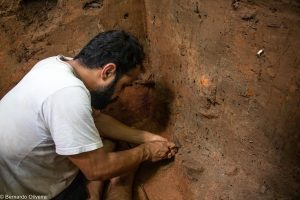 I graduated in History and Languages, Literature and Cultures from the University of São Paulo (USP) (2012). I have a Masters in Archaeology from the Federal University of Sergipe (UFS) (2018). During my master’s degree, I developed my research on the archaeological ceramic record from the Teotônio site (Study area 3 of HERCA project), one of the most significant archaeological sites in the region of the upper Madeira river. Since 2012, I have participated at the MAE-USP Archaeology of the Tropics Laboratory (ARQUEOTROP), where I took part in several fieldtrips and in the curation and analysis of archaeological lithic and ceramic material from the Amazon. Currently, I am a PhD student with a FAPESP fellowship in Archaeology at the Archaeology and Ethnology Museum (MAE-USP), supervised by Dr Eduardo Neves. My research interests are in archaeological ceramics from the Amazon; long-term indigenous history; contributions between Archaeology, Linguistics, History and Literature; Landscape; Historical Ecology and Meaningful and Persistent Places. As a member of the HERCA project, I will focus mainly on the upper Madeira River region, doing fieldwork and analysing archaeological material from the excavations.
I graduated in History and Languages, Literature and Cultures from the University of São Paulo (USP) (2012). I have a Masters in Archaeology from the Federal University of Sergipe (UFS) (2018). During my master’s degree, I developed my research on the archaeological ceramic record from the Teotônio site (Study area 3 of HERCA project), one of the most significant archaeological sites in the region of the upper Madeira river. Since 2012, I have participated at the MAE-USP Archaeology of the Tropics Laboratory (ARQUEOTROP), where I took part in several fieldtrips and in the curation and analysis of archaeological lithic and ceramic material from the Amazon. Currently, I am a PhD student with a FAPESP fellowship in Archaeology at the Archaeology and Ethnology Museum (MAE-USP), supervised by Dr Eduardo Neves. My research interests are in archaeological ceramics from the Amazon; long-term indigenous history; contributions between Archaeology, Linguistics, History and Literature; Landscape; Historical Ecology and Meaningful and Persistent Places. As a member of the HERCA project, I will focus mainly on the upper Madeira River region, doing fieldwork and analysing archaeological material from the excavations.
Anouk Lafortune-Bernard
I am based in the University of Reading, working as a Teaching Fellow in the Museum of English Rural Life. I am interested in the social and economic impact of cultural heritage and museums and community engagement. My PhD thesis analysed the development of Lumbini, Birthplace of the Buddha and UNESCO World Heritage Site and its impact on surrounding local communities. Alongside my doctoral research, I have also been involved in several projects led by Durham University’s UNESCO Chair, primarily at South Asian and World Heritage sites. I joined the HERCA project in January to support the impact activities. The main aim is to engage with museums to strengthen the cultural identity of inhabitants of the Beni province of Amazonian Bolivia and foster awareness of its sustainable land-use potential. The project will co-design and develop approaches with partner institutions and local stakeholders to better mobilise the educational potential of local museums, through exhibitions and other learning resources, and disseminate the results of the research to a wider local and international audience.
Myrtle P. Shock
I received a B.Phil in Anthropology from the University of Pittsburgh (2003) and an M.A. (2005) and PhD (2010) in Anthropology from the University of California, Santa Barbara. Currently, I am an assistant professor in the Anthropology and Archaeology Department at the Federal University of Western Pará State (UFOPA), in Santarém, Brazil. My research examines human food choice and environmental modifications across the Holocene. I started these investigations in Central Brazil and currently, my research focuses on the Amazon with participation in multiple collaborative projects across the basin. Recently, I collaborated on the project “Exploration, Mapping and Excavation on the Fluvial Shellmounds of the Guaporé Basin, Southwestern Amazonia” of the National Geographic Society (2014-2016). My involvement in the HERCA project is with the analysis of macro-botanical remains of Early to Middle Holocene contexts and the supervision of students. The main research question is how human populations modified their environment and the availability of plant resources. In this project I will be training Brazilian and Bolivian in archaeobotany. In 2020 I participated in the fieldwork at the Monte Castelo shell mound (Brazilian-Bolivian border) and will later go to the Teotónio site (Southwestern Brazil). I also teach students at the Universidade Maior de San Andrés, who are analyzing remains from the archaeological sites in the Bolivian Llanos de Mojos.
Gabriela Prestes-Carneiro
I have a BSc in History from the University of São Paulo (2011), an MSc in Quaternary and Prehistory from the Natural History Museum of Paris (2013), and a PhD in Archaeology (2018) as a dual-degree from the Natural History Museum of Paris and the University of São Paulo. Currently, I’m an assistant professor in the Anthropology and Archaeology Department at the Federal University of Western Pará State (UFOPA), in Santarém, Brazil. Since 2010 I have been interested in past human-animal relations in Amazonian societies, focusing on the study of faunal remains from archaeological sites. I started these investigations in the central Amazon studying food choices. More recently, I started to work in Southwestern Amazonia, studying fish environments and human landscape modifications, such as ponds and weirs, related to seasonal water cycles. Recently, I have started to collaborate on the project “Exploration, Mapping and Excavation on the Fluviatil Shellmounds of the Guaporé Basin, Southwestern Amazonia” (National Geographic Society, 2014-2016), and on the AHRC-FAPESP HERCA project. In HERCA, I will investigate the correlations between the archaeological fauna and recorded paleoenvironmental conditions to better understand the local manifestations of environmental fluctuations through the Holocene. I have been to the Monte Castelo shell mound (Brazilian-Bolivian border) in 2020 and I will visit the archaeological sites of the Llanos de Mojos (Bolivia). I am also actively training students in Zooarchaeology and in this capacity will travel to the Universidade Maior de San Andrés in Bolivia.
Sadie Weber
I am an archaeologist with a PhD from the Department of Anthropology at Harvard University. I have worked in Peru, Brasil, and Jordan, and my doctoral dissertation employed zooarchaeology, microbotany, and stable isotope analysis to examine the role of llama caravans in the Central Andes of Peru at 3,000 B.C. As a member of the HERCA team, my primary aim is to reconstruct paleoclimate by employing δ18O analysis of freshwater snails at Monte Castelo. More broadly, I am interested in foodways and human-environment interactions across South America.
Fernando Ozorio de Almeida
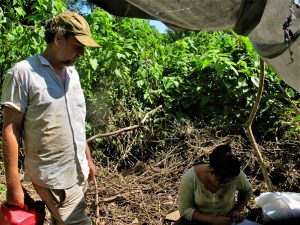 I am a specialist in the study of long-term indigenous histories in South-American Lowlands. I graduated in History at the University of São Paulo and I also received an MSc and a PhD degree from the Museum of Archaeology and Ethnology of the same university. My studies have focused on southern Amazon. During 2018-2019 I hold a post-doctoral research position at the Museo de La Plata (Argentina). For sixteen years I have studied the history (pre-colonial and colonial) of the Tupian groups who were the most pervasive group of the lowlands by the time of the European arrival, roughly delimiting the territory which is today Brazil. Since 2014, I have been an assistant professor in Universidade Federal de Sergipe, supervising undergraduate and graduate (MA and PhD) students related to projects in Amazonia, in the Brazilian Northeast and elsewhere. Since 2008 I have focused my research in the Upper Madeira region. Within the HERCA Project, my participation is related to the survey and excavation of archaeological sites on the Mamoré and Madeira Rivers, including the archaeological excavations on the Teotônio site. Moreover, I will contribute with the interpretation and synthesis of the ceramic analysis coming from these sites.
I am a specialist in the study of long-term indigenous histories in South-American Lowlands. I graduated in History at the University of São Paulo and I also received an MSc and a PhD degree from the Museum of Archaeology and Ethnology of the same university. My studies have focused on southern Amazon. During 2018-2019 I hold a post-doctoral research position at the Museo de La Plata (Argentina). For sixteen years I have studied the history (pre-colonial and colonial) of the Tupian groups who were the most pervasive group of the lowlands by the time of the European arrival, roughly delimiting the territory which is today Brazil. Since 2014, I have been an assistant professor in Universidade Federal de Sergipe, supervising undergraduate and graduate (MA and PhD) students related to projects in Amazonia, in the Brazilian Northeast and elsewhere. Since 2008 I have focused my research in the Upper Madeira region. Within the HERCA Project, my participation is related to the survey and excavation of archaeological sites on the Mamoré and Madeira Rivers, including the archaeological excavations on the Teotônio site. Moreover, I will contribute with the interpretation and synthesis of the ceramic analysis coming from these sites.
Lautaro Maximilian Hilbert
 I have BSc in Biology, and an MSc in Zoology focused in zooarchaeology from the Pontifical Catholic University of Rio Grande do Sul-Brazil. A PhD in Archaeology from the University of Exeter-UK.
I have BSc in Biology, and an MSc in Zoology focused in zooarchaeology from the Pontifical Catholic University of Rio Grande do Sul-Brazil. A PhD in Archaeology from the University of Exeter-UK.
Currently, I am working in south Brazil as a field archaeologist and phytolith analyst. As a previous member of the Pre-Columbian Amazon Scale Transformations (PAST) project at the University of Exeter, I participated in excavations on Amazonian Dark Earth sites in the Lower Tapajós and around Laguna Versalles in the Iténez Forest Reserve, Bolivia. I have extensive experience recording and presenting archaeological and archaeobotanical data using the stratigraphic plotting software C2 Version 1.7.7. and, I also have experience working on the statistical multi-paradigm numerical computing environment program, MatLab version R2017a. My areas of interests are in pre-Colombian archaeobotanical studies from lowland Amazonian region, centred in plant domestication and plant management.
Guilherme Mongelo Zdonek
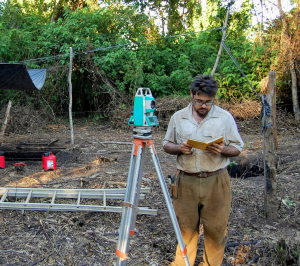 I am an archaeologist with a BSc in History from the University of São Paulo. I also obtained my Master’s and PhD. degrees in Archeology at the Museum of Archeology and Ethnology of the same university. I have experience working with Amazonian archaeology since 2008, and for the last nine years, I have contributed with the archaeological project in the region of the upper Madeira River. My master’s research dealt with the old layers of Terra Preta at the Teotônio site (Study area 3). I delved into this subject in my doctoral research, where I analyzed the material culture of the earliest human occupations in this site. Currently, I work as a professor and researcher at Escuela Superior Politécnica del Litoral – ESPOL, in Ecuador. As a member of the HERCA project, I will contribute with the various analyzes of the archaeological contexts of the initial human occupations in the upper Madeira River sites, focusing on the lithic materials.
I am an archaeologist with a BSc in History from the University of São Paulo. I also obtained my Master’s and PhD. degrees in Archeology at the Museum of Archeology and Ethnology of the same university. I have experience working with Amazonian archaeology since 2008, and for the last nine years, I have contributed with the archaeological project in the region of the upper Madeira River. My master’s research dealt with the old layers of Terra Preta at the Teotônio site (Study area 3). I delved into this subject in my doctoral research, where I analyzed the material culture of the earliest human occupations in this site. Currently, I work as a professor and researcher at Escuela Superior Politécnica del Litoral – ESPOL, in Ecuador. As a member of the HERCA project, I will contribute with the various analyzes of the archaeological contexts of the initial human occupations in the upper Madeira River sites, focusing on the lithic materials.
Luiza Reis
 I have a Bachelor’s Degree in Oceanography from the Federal University of Pará (2013), with a Professional Master’s Degree in Sustainable Use of Natural Resources in Tropical Regions by Vale Institute of Technology (2015) and a PhD in Science (2020) from the Center for Nuclear Energy in Agriculture (CENA / USP), with internship (2008) at the University of Sorbonne, France. My areas of expertise are palaeobotany and palaeoclimatology, with a focus on paleoenvironmental reconstruction studies and paleoclimatic inferences in the Amazon, in which I apply tools such as palynology, charred particles, stable isotopes (C, N) and Carbon-14, as well as stable isotopes of H and C in specific compounds (n-alkanes, fatty acids) preserved in lake sediments to obtain information about paleo precipitation throughout the Late Quaternary.
I have a Bachelor’s Degree in Oceanography from the Federal University of Pará (2013), with a Professional Master’s Degree in Sustainable Use of Natural Resources in Tropical Regions by Vale Institute of Technology (2015) and a PhD in Science (2020) from the Center for Nuclear Energy in Agriculture (CENA / USP), with internship (2008) at the University of Sorbonne, France. My areas of expertise are palaeobotany and palaeoclimatology, with a focus on paleoenvironmental reconstruction studies and paleoclimatic inferences in the Amazon, in which I apply tools such as palynology, charred particles, stable isotopes (C, N) and Carbon-14, as well as stable isotopes of H and C in specific compounds (n-alkanes, fatty acids) preserved in lake sediments to obtain information about paleo precipitation throughout the Late Quaternary.
Joe Hirst
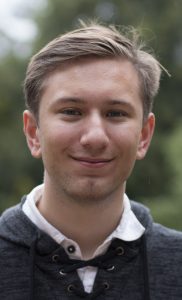 I am a Palaeoecologist, with a BSc in Geography from King’s College London (2018) and an MSc in Quaternary Science from Royal Holloway, University of London (2019). I am currently undertaking a PhD in Environmental Science at the University of Reading (2020- ), supervised by Prof. Frank Mayle. My project aims to determine the impact Pre-Columbian societies had on their surrounding rainforest/savannah ecosystems, particularly focusing upon the Monumental Mound Region of the Llanos de Mojos (Study Area 1). This involves using fossil pollen and charcoal as palaeoecological proxy records to reconstruct past changes in vegetation composition and fire activity. In addition, I will be developing an Agent-based Model (using the NetLogo modelling software) to provide an insight into how this Pre-Columbian society may have domesticated the surrounding rainforest, as well as the legacy of their activities.
I am a Palaeoecologist, with a BSc in Geography from King’s College London (2018) and an MSc in Quaternary Science from Royal Holloway, University of London (2019). I am currently undertaking a PhD in Environmental Science at the University of Reading (2020- ), supervised by Prof. Frank Mayle. My project aims to determine the impact Pre-Columbian societies had on their surrounding rainforest/savannah ecosystems, particularly focusing upon the Monumental Mound Region of the Llanos de Mojos (Study Area 1). This involves using fossil pollen and charcoal as palaeoecological proxy records to reconstruct past changes in vegetation composition and fire activity. In addition, I will be developing an Agent-based Model (using the NetLogo modelling software) to provide an insight into how this Pre-Columbian society may have domesticated the surrounding rainforest, as well as the legacy of their activities.
Lorena Becerra-Valdivia
 I am an archaeological scientist and radiocarbon dating expert, with MSc and DPhil (PhD) degrees from the Research Laboratory for Archaeology and the History of Art (RLAHA), University of Oxford. My research involves the construction of reliable, high-resolution chronologies using radiocarbon dating and Bayesian age modelling techniques, and focuses on the interface between past human occupations, ecology, and climate. Past projects include the establishment of timelines for hominin (modern humans and Neanderthals) dynamics during the Middle to Upper Palaeolithic Transition in the Zagros Mountains, and the initial arrival of humans to the Americas around the Last Glacial Maximum. As a member of the HERCA team, my primary aim is to produce/manage radiocarbon data for the creation of highly resolved human occupation and palaeo-environmental sequences. The integration of these results will help us better understand the relationship between humans, ecological and climatic changes in pre-Columbian Amazonia.
I am an archaeological scientist and radiocarbon dating expert, with MSc and DPhil (PhD) degrees from the Research Laboratory for Archaeology and the History of Art (RLAHA), University of Oxford. My research involves the construction of reliable, high-resolution chronologies using radiocarbon dating and Bayesian age modelling techniques, and focuses on the interface between past human occupations, ecology, and climate. Past projects include the establishment of timelines for hominin (modern humans and Neanderthals) dynamics during the Middle to Upper Palaeolithic Transition in the Zagros Mountains, and the initial arrival of humans to the Americas around the Last Glacial Maximum. As a member of the HERCA team, my primary aim is to produce/manage radiocarbon data for the creation of highly resolved human occupation and palaeo-environmental sequences. The integration of these results will help us better understand the relationship between humans, ecological and climatic changes in pre-Columbian Amazonia.
Fabiano Pupim
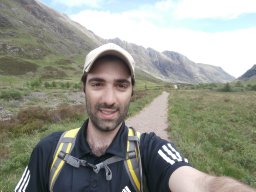 I am a Physical Geographer, PhD. in Geosciences and Environment (2014 – São Paulo State University), and postdoc at the University of São Paulo and Imperial College London (2015-2017). Since 2017, I am an Associate Professor in Geomorphology and Environment of the Department of Environmental Sciences, Federal University of São Paulo (Unifesp), Brazil. My main research interest is understanding “how large rivers respond to environmental changes across spatiotemporal scales”, using remote sensing, morphosedimentary analysis, and geochronological tools, such as luminescence dating and cosmogenic nuclides analysis. Most of his research has been performed in the largest South American fluvial systems, including Amazon, Orinoco, Pantanal, Paraná, and São Francisco.
I am a Physical Geographer, PhD. in Geosciences and Environment (2014 – São Paulo State University), and postdoc at the University of São Paulo and Imperial College London (2015-2017). Since 2017, I am an Associate Professor in Geomorphology and Environment of the Department of Environmental Sciences, Federal University of São Paulo (Unifesp), Brazil. My main research interest is understanding “how large rivers respond to environmental changes across spatiotemporal scales”, using remote sensing, morphosedimentary analysis, and geochronological tools, such as luminescence dating and cosmogenic nuclides analysis. Most of his research has been performed in the largest South American fluvial systems, including Amazon, Orinoco, Pantanal, Paraná, and São Francisco.
Carlos H. Grohmann
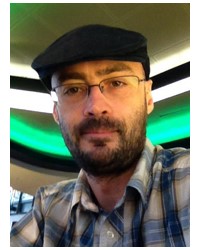 Carlos H. Grohmann is a Geologist, PhD in Geotectonics (2008 – University of São Paulo). Professor of the University of São Paulo since 2009, is currently an Associate Professor of Geotechnologies at the Institute of Energy and Environment (IEE-USP). His research interests include Digital Terrain Analysis (Geomorphometry) in local and global scale, development of high-resolution DEMs from Remotely Piloted Aircrafts (RPAs/drones) optical and LiDAR sensors, landslide susceptibility and risk, Remote Sensing and applications of Free and Open Source Software (FOSS) in the Geosciences.
Carlos H. Grohmann is a Geologist, PhD in Geotectonics (2008 – University of São Paulo). Professor of the University of São Paulo since 2009, is currently an Associate Professor of Geotechnologies at the Institute of Energy and Environment (IEE-USP). His research interests include Digital Terrain Analysis (Geomorphometry) in local and global scale, development of high-resolution DEMs from Remotely Piloted Aircrafts (RPAs/drones) optical and LiDAR sensors, landslide susceptibility and risk, Remote Sensing and applications of Free and Open Source Software (FOSS) in the Geosciences.
McKenzie Bentley
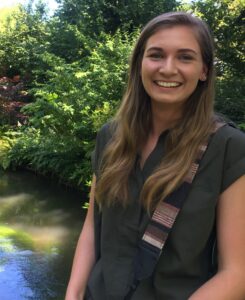 I have a BS in Chemistry (2020) and BA in Interdisciplinary Humanities focused in Anthropology (2020) from Florida State University (FSU). I am currently undertaking an MSc in Archaeological Science from the Research Laboratory for Archaeology and the History of Art (RLAHA), University of Oxford (2021-2022). My previous experience includes geochemical characterisation studies of ceramics excavated from several Neolithic sites across Florida, U.S. With the Department of Anthropology at FSU, I aimed to understand changing patterns of resource-acquisition in some of the earliest ceramic industries in North America, while my work for the U.S. National Council for Preservation Education, in conjunction with the National Park Service, reflected my interest in understanding possible connections across multiple sites in southern Florida. My work with HERCA will be focused on radiocarbon dating and residue analysis of pottery within the archaeological site of Teotonio at the Oxford Radiocarbon Accelerator Unit, under the supervision of Christopher Bronk Ramsey and Lorena Becerra-Valdivia.
I have a BS in Chemistry (2020) and BA in Interdisciplinary Humanities focused in Anthropology (2020) from Florida State University (FSU). I am currently undertaking an MSc in Archaeological Science from the Research Laboratory for Archaeology and the History of Art (RLAHA), University of Oxford (2021-2022). My previous experience includes geochemical characterisation studies of ceramics excavated from several Neolithic sites across Florida, U.S. With the Department of Anthropology at FSU, I aimed to understand changing patterns of resource-acquisition in some of the earliest ceramic industries in North America, while my work for the U.S. National Council for Preservation Education, in conjunction with the National Park Service, reflected my interest in understanding possible connections across multiple sites in southern Florida. My work with HERCA will be focused on radiocarbon dating and residue analysis of pottery within the archaeological site of Teotonio at the Oxford Radiocarbon Accelerator Unit, under the supervision of Christopher Bronk Ramsey and Lorena Becerra-Valdivia.






